Blog
King’s Rice Bag (inspired by the African Peace Bag)
Traditionally in Liberia a rice bag was woven out of raffia and carried not only rice but gifts for chiefs amoungst other things. It was special because of how it was woven: without seams, in one continuous motion. Only a master weaver could create one as the technique and knowledge was guarded by those who could and only taught to an apprentice after many years.
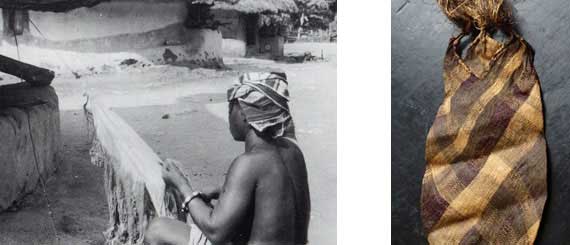
In the 1960’s the Peace Corps came to Liberia and they used this bag. Over time the bag became associated with them and known as the Liberian Peace Rice Bag, or in short, the Peace Bag.
Today this bag is a rarity, only found in museums because the art of both weaving, and of weaving this particular bag, is no longer practiced. Both inspired by this bag and saddened by the story of a beautiful object lost to our fast-paced, commercial throw-away society, we decided to use our modern day Basmati Rice Bags in a similar way.
The Basmati Rice Bags found in Cape Town, originally from Pakistan, are a simple rectangle, folded and stitched closed. Once emptied two seams remain.
To make the sack useable, and longer lasting, as a bag we added an inner layer out of Duck Canvas – the original heavy-duty cotton canvas – that closes with a zip and has two pockets inside. This inner is only three pattern peices and is a system of folds rather than cuts. We tried to keep it as simple as possible to be as keep the connection to the original one-process creation of the Liberian Rice Bag/Peace Bag.
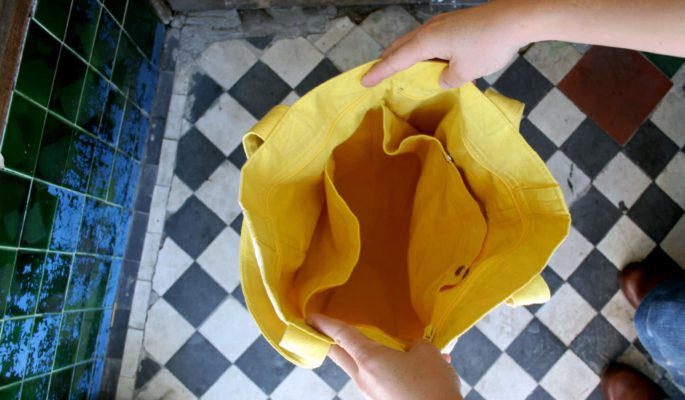
Outside we added two seams to the base (squaring it) and 100% cotton straps so that it can be carried – over the shoulder, in the hand, short or long.
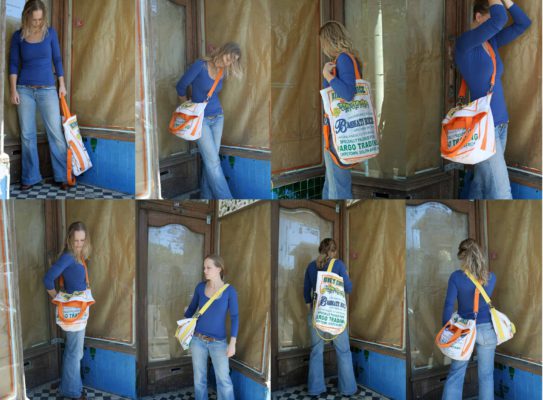
The final result is what we call “The Kings Rice Bag”. A versatile, strong, reusable bag that looks at home anywhere you take it.
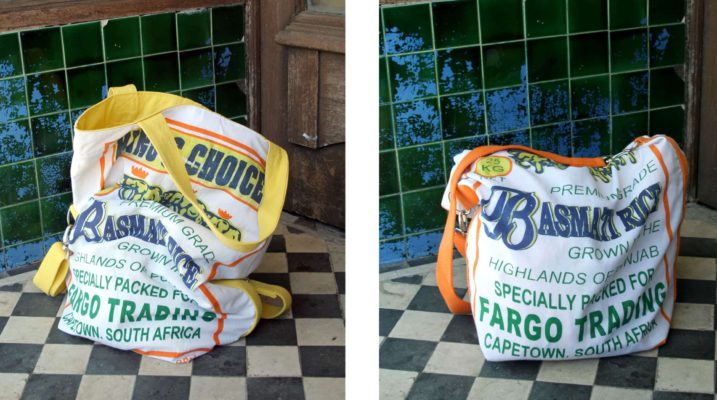
The Kings Rice Bag is available in a powdery naartjie orange – inspired by the rice spice Jujube (Jujube dye), and a golden yellow – inspired by the rice spice Tumeric.
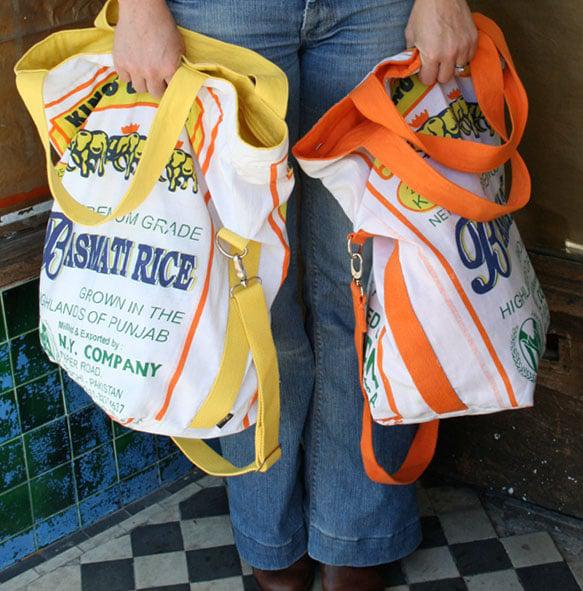
Size wise the bag is a 11cm deep, 23cm wide, 50cm high, 45cm across (zip).
– – – – – – – – – – – – – – – – – – – – – – – – – – – – – – – – – – – – – – – – – – – –
Information from:
Dendel, E.W. (1974). African Fabric Crafts, Sources of African Design & Technique. New York: Taplinger Pub. Co
Image of original Liberian Rice Bag from:
http://adireafricantextiles.blogspot.com/2012/06/liberian-rice-bagweaving-without-loom.html
H. Labouret, before 1933. reproduced from Karl-Ferdinand Schaedler Weaving in Africa (Pantterra Verlag, Munich, 1987.































Comments are closed.